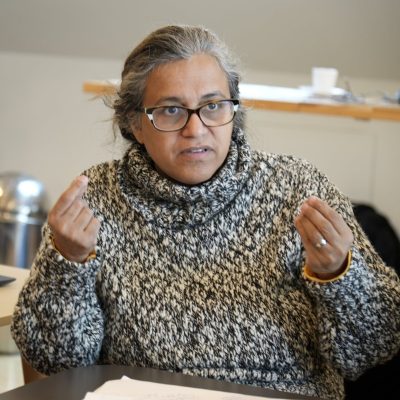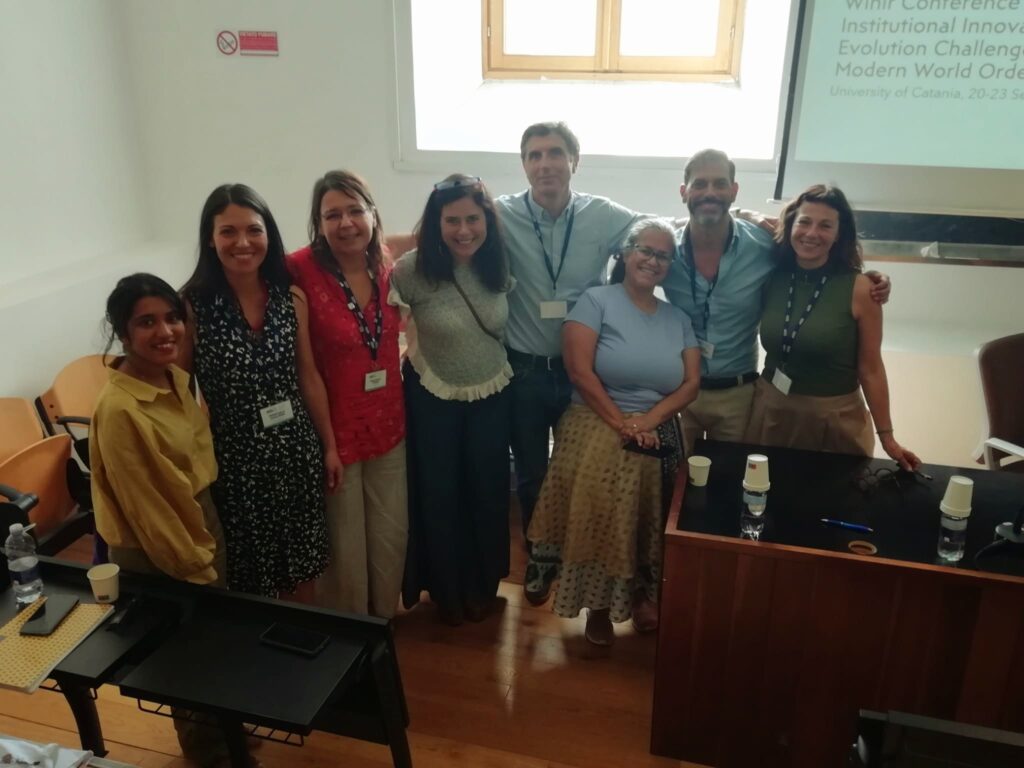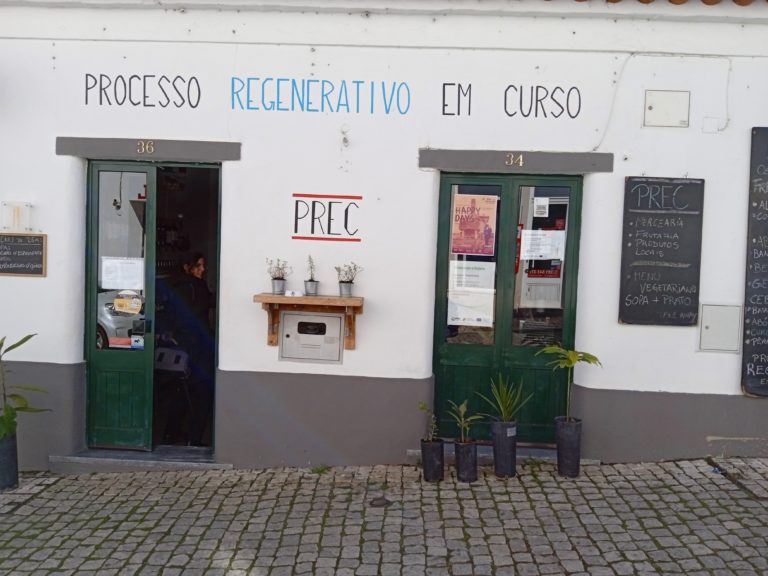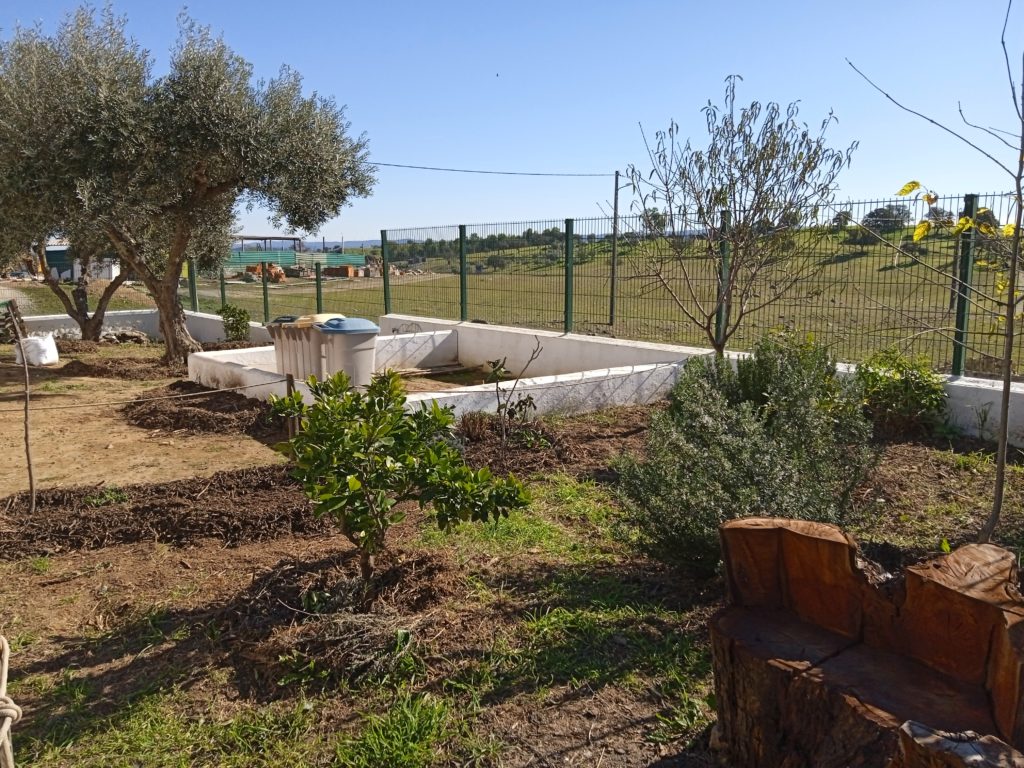Indigenous women’s ‘more complex’ idea of biodiversity
By Dianna Bautista
Women have crucial knowledge and play a key role in environmental actions. However, their efforts are often overlooked in conversations about solutions for biodiversity loss.
Dr Luciane Lucas dos Santos, an associate researcher at the University of Coimbra’s Centre for Social Studies, is keenly aware of this. Growing up in Brazil, she was inspired by the leadership and empowerment of local women. As a researcher, she studies feminism and intersectionality in research and policy.
She is a member of the European Union-funded project BIOTraCes (Biodiversity and Transformative Change for plural and nature positive societies), where she leads a case study about combatting desertification using collective action, including applying the agricultural knowledge of senior women.
In a conversation with University World News, she discusses the importance of women in biodiversity conservation efforts, with an emphasis on the impact of traditional and indigenous women. This interview has been edited for length and clarity.

Dr Luciane Lucas Dos Santos from Centro de Estudos Sociais da Universidade de Coimbra (CES)
DB (UWN): Your research has a focus on intersectionality and the inclusion of marginalised voices. How important is it to include these individuals in conversations about biodiversity?
LLDS: Intersectionality is a concept that helps us understand to what extent different asymmetries of race, gender, and class, in interaction, may deepen even more the inequality in which some people live. Combined asymmetries may deepen not only material constraints but also situations of environmental injustice.
Including minoritised groups, such as minority women, Roma and indigenous people, racialised people, and migrants in conversations about biodiversity means recognising that environmental justice cannot be dissociated from social justice. Particularly as these groups are usually the most affected by the environmental burden and the least benefited by the betterments.
DB (UWN): What role do women play in the conservation of nature?
LLDS: In many parts of the world we have seen women – such as peasant women, indigenous women, women from coastal communities – at the forefront of the fight against transgenic crops, large dams, water and land contamination by mining and other relevant issues.
Although barely recognised, it is worth stressing the role played by women, in their communities, in promoting different logics of production as well as undervalued aspects in economic activities, such as reciprocity, community redistribution of (scarce) resources and domestic provisioning.
The underlying mentality here differs from the depletion of resources, being aligned with biodiversity preservation.

Dr. Luciane Lucas dos Santos with her BIOTraCes colleagues from CES and UNICT.
DB (UWN): How does increasing representation of traditional and indigenous women help biodiversity research and policy?
LLDS: Indigenous people do not see nature as a mere resource, which implies a different look at forests, rivers, mountains. The production and the organisation of the material life cannot be dissociated from a spiritual dimension. It means that indigenous communities recognise the agency of other beings in the natural world – something that the prevalent Western thought insists on ignoring.
Indigenous women, in turn, have played a pivotal role in the preservation of this connection between the sacred dimension of the rites and the organisation of ordinary life. We may say that their representation in research and policy broadens our perception of material culture, making us aware of the existence and the needed interplay with non-human worlds. In this sense, their idea of biodiversity is much more complex.
DB (UWN): Your background involves being raised and studying in Brazil. How did your experiences influence your career goals and aspirations? Were there women who inspired your career path?
LLDS: Brazil is a place where social and popular movements are vibrant and active. Minoritised women such as black, peasant, indigenous and migrant women do not remain silent about social and environmental injustice.
Popular feminisms might be said to get more and more prominence in the public sphere, associating thought-provoking questioning, self-empowering, a network of care and support and the underlying perspective that the ‘political’ happens in ordinary life.
Experiences in Brazil, notably the ones attached to the idea of community economies – where women are frequently at the forefront – have largely inspired my research and writings. Similarly, I am very grateful to indigenous women, particularly the Guajajara women, that helped me to understand the epistemological relevance of indigenous cosmovisions (a joint concept of the world, in physical, spiritual and environmental terms) and their capacity of encompassing an other-than-human approach.
DB (UWN): Have there been experiences in your career that have highlighted the need for better representation for women and individuals from differing backgrounds in this field?
LLDS: All the time. As a racialised woman who has been invited to talk to international audiences through books and conferences, I have been constantly struck by the underrepresentation of black women in research and lecturing in European contexts. Academic and activist contributions coming from migrant, black, indigenous, Roma and Muslim women, to name but a few, may help us to reduce set biases and processes of othering.
DB (UWN): You are a member of the BIOTraCes project, which explores biodiversity loss and the relationship between society and nature. The consortium is largely female, how important has it been to have high female representation within the project?
LLDS: This gender representativeness is indeed an achievement. It becomes even more important if we take into account the straight relationship between gender inequality and climate change crisis.
Women in general – and minority women in particular – peasant women all over the world, displaced women, Roma women, etcetera – are disproportionately affected by climate change, with consequences for their own health and security.
Since they are at the frontline of care issues, supporting children, older people and diseased people, their mobility and access to resources and information in case of environmental disasters are constantly jeopardised.
DB (UWN): Your BIOTraCes case study in Mértola, Portugal focuses on combatting desertification with knowledge from locals, including elderly women. How does their traditional knowledge in the fight against climate change and biodiversity loss?
LLDS: Broadly speaking, rural women are likely to be among the most affected by desertification processes. They are an active force in agriculture, even though their land ownership is still a challenge in many places.
Rural women may also be affected by other issues, particularly when ageing, such as social isolation, economic vulnerability (limited access to resources over life), and limited access to health services, to name but a few.
Going against the grain, rural older women have played an active role in the fostering of resilient communities. That is the case of Mértola, where rural older women actively participate in a kind of local food lab, fostering the appreciation of local food and healthy eating, as well as teaching children and parents to prepare healthy meals based on local ingredients. Their knowledge is seized and prized within a project of ecological transition in Mértola.


Images from Mértola, Portugal , the location of our CES-led Portugal BIOTraCes case study.
DB (UWN): Days such as International Women’s Day remind us of women’s achievements and the push for greater equality and equity. In your opinion, what does the future of feminism and women empowerment look like?
LLDS: Women have actively contributed to building more resilient communities all over the world. Feminist thought, in turn, has evidenced to what extent different fields of knowledge neglected gender asymmetries in important issues such as urban and rural planning, housing policies, employment conditions, and access to health, education and care facilities, to name but a few.
Climate change challenges and biodiversity loss have been ultimately among the trending topics and it is now recognised that these issues require special attention to gender inequalities.
With regard to that, feminist lenses can not only contribute to the public perception of how women have been disproportionately affected by climate change but also to the recognition of the crucial role they have played in the fight for environmental justice for all.
This article was originally published on University World News (UWN) on 08 March 2024: Indigenous women’s ‘more complex’ idea of biodiversity (universityworldnews.com)